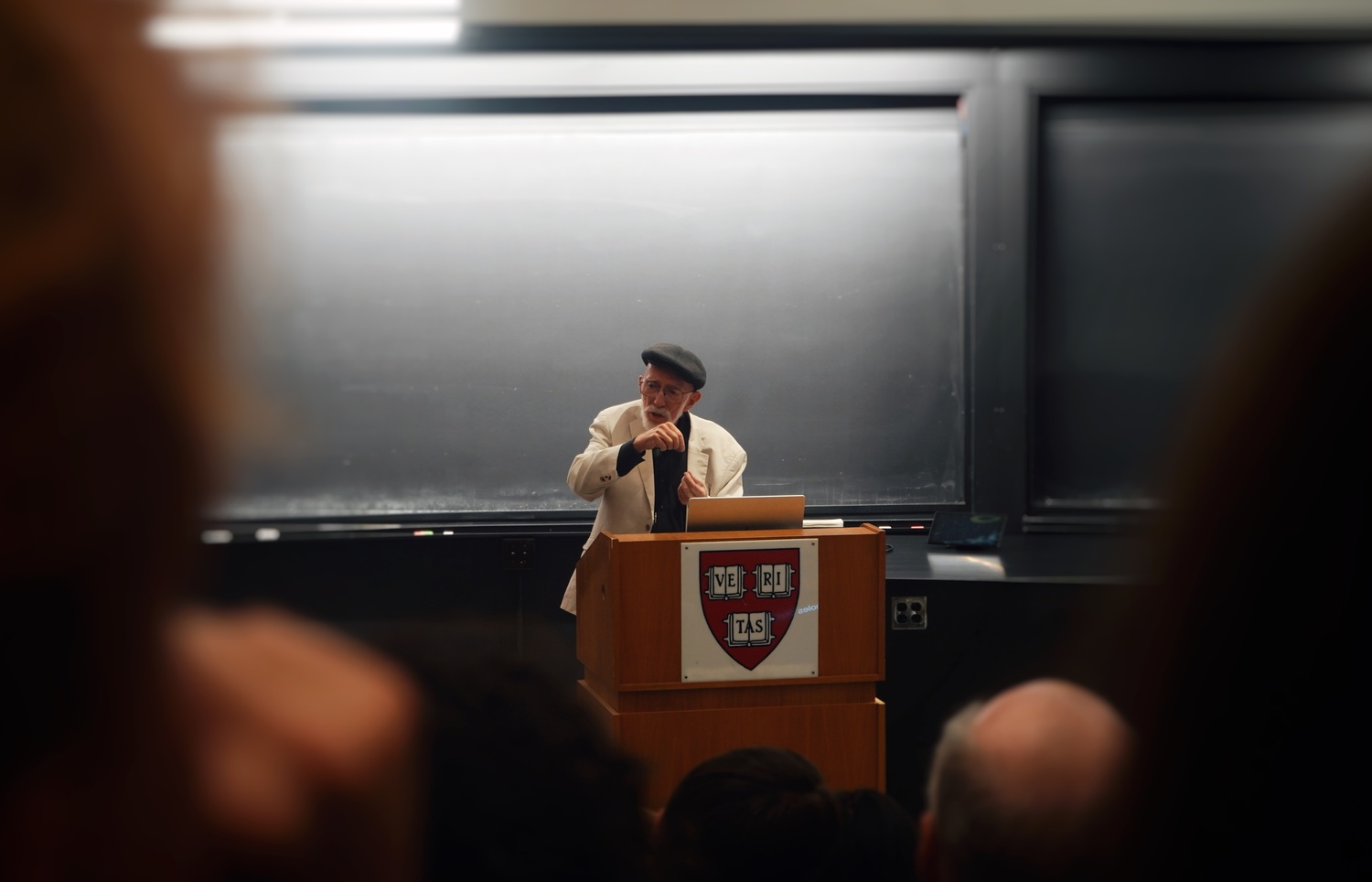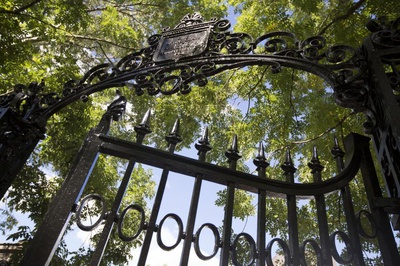
News
Harvard Grad Union Agrees To Bargain Without Ground Rules

News
Harvard Chabad Petitions to Change City Zoning Laws

News
Kestenbaum Files Opposition to Harvard’s Request for Documents

News
Harvard Agrees to a 1-Year $6 Million PILOT Agreement With the City of Cambridge

News
HUA Election Will Feature No Referenda or Survey Questions
Kip Thorne, 2017 Nobel Laureate, Talks Black Holes During Inaugural Hawking Lecture

Hundreds packed Science Center Hall B to watch Kip S. Thorne, a professor of theoretical physics at Caltech and a 2017 Nobel Prize laureate, discuss black holes and wormholes during the inaugural Hawking Lecture on Friday.
The Black Hole Initiative, a Harvard-based interdisciplinary group of researchers focused on the study of black holes, organized the lecture in honor of Stephen W. Hawking, who was one of the world’s most famous theoretical physicists before he died in 2018.
Thorne began his lecture by speaking on his over half-a-century of friendship with Hawking.
“Our friendship quickly became a very personal friendship, rather than a physics friendship,” Thorne said. “When we would get together, we would be more likely to talk about our lives, our loves, and even death.”
Physics professor Andrew E. Strominger ’77, one of BHI’s founding principal investigators, said in an interview that Hawking was “one of the great scientists of our time” and a “friend of Harvard.”
“We collaborated together and we wanted to honor him,” Strominger added.
After praising Hawking and his contributions to the field of physics, Thorne devoted the rest of his lecture to the “warped side of our universe,” discussing the topics in astrophysics that he and colleagues researched throughout his career.
During the lecture, Thorne provided attendees with a detailed description of black holes.
“In addition to warping with space, there’s a warping of time around the black hole,” he said. “Time slows to near a halt near the horizon.”
Thorne also discussed wormholes, time travel and gravitational waves during his presentation.
“Now, as best we understand it, there are only two types of waves for exploring the universe,” Thorne said. “Electromagnetic waves, which, of course, include live radio waves, X-rays, gamma rays and so forth, and gravitational waves.”
Thorne gained prominence as a physicist for making critical contributions to the Laser Interferometer Gravitational-Wave Observatory, which he described as a “modern quantum precision measurement technology.”
Thorne’s career took an artistic turn in the early 2000s, primarily through his contribution to Christopher Nolan’s 2014 film “Interstellar.”
In addition to incorporating scenes from “Interstellar” into his lecture, Thorne also included paintings by Lia Halloran as part of his effort to find new ways to talk about physics.
Halloran illustrated Thorne’s recently published book “The Warped Side of Our Universe.”
Thorne said that he intends to continue to pursue more artistic work instead of traditional academic research.
“As for the future of warped space time research, well, that’s in the hands of these days’ students, postdocs, and young faculty, while I focus on fun and the interface with the arts,” Thorne said.
Yaroslav Davletshin ’28 said he attended the presentation because “Kip Thorne is a legend of astrophysics, and I just figured that I could not miss this event.”
“Unfortunately, I did not have sufficient background in astrophysics, cosmology, general relativity, whatnot to understand like every dot and comma in his presentation,” Davletshin said. “But the overall ideas are very interesting, inspiring.”
Want to keep up with breaking news? Subscribe to our email newsletter.
From Our Advertisers

Over 300+ courses at prestigious colleges and universities in the US and UK are at your disposal.

With innovative financial tools combined with financial education, Collegiate empowers students to take control of their finances and build confidence in their money management skills.

Serve as a proctor for Harvard Summer School (HSS) students, either in the Secondary School Program (SSP), General Program (GP), or Pre-College Program.

With an increasingly competitive Law School admissions process, it's important to understand what makes an applicant stand out.

Welcome to your one-stop gifting destination for men and women—it's like your neighborhood holiday shop, but way cooler.

Admit Expert is a premium MBA admissions consulting company, helping candidates secure admission to top B-schools across the globe with significant scholarships.
